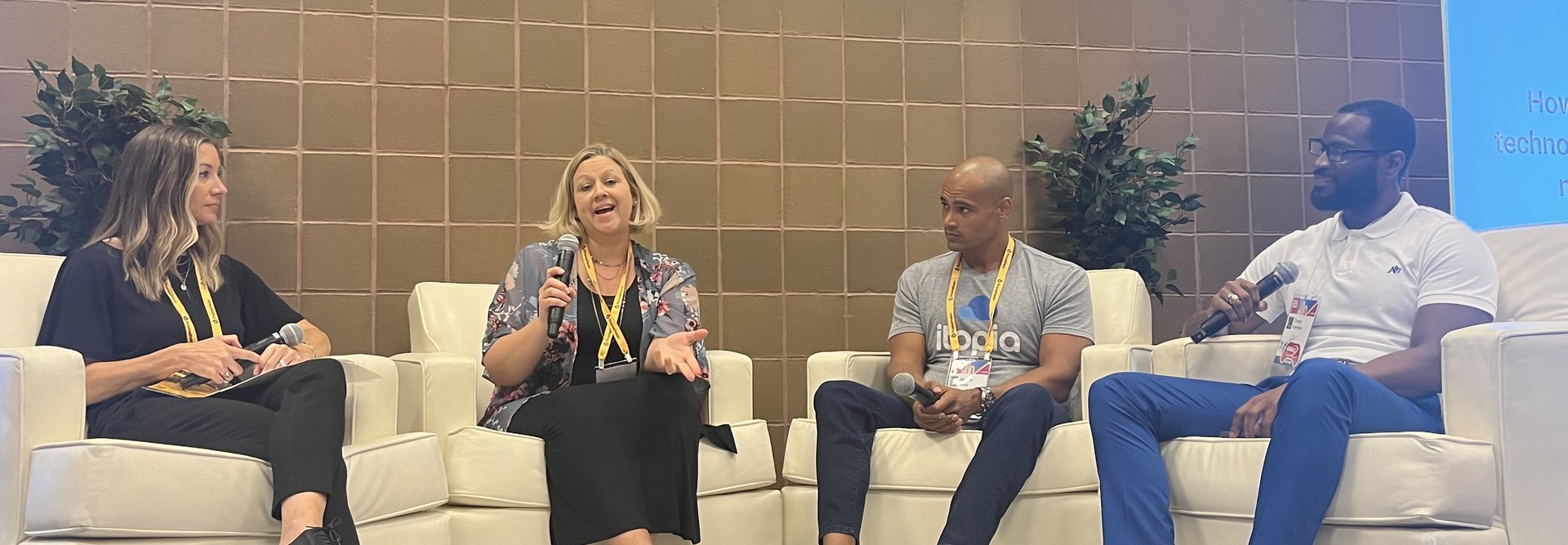Emerging Tech Is No Longer a Novelty
The panelists emphasized that drones, robots, VR and browser-based tools can empower students to become creators by building their analytical and computational skills. These technologies also expose them to industry-standard tools.
Elzen said that while VR was seen as a novelty for many years because there was little curriculum-aligned content available, today VR can facilitate career exploration, immersive learning, support for students with special needs and more. Students can even earn VR-related certifications and college credits.
“We have solutions where students can be the developers,” Roesken added. “They can be the producers, they can create that content and game design. They can actually create the content that they’re viewing on the VR headsets.”
Panelists also noted that giving students access to these technologies could support effective workforce planning, as they would learn to master tools they could use in future careers.
They said that while there is some concern among workers doing today’s high-touch or manual work that these tools could make their jobs obsolete, industry will still need programmers to tell drones and robots what to do, for instance.
RELATED: Here’s how schools are using the metaverse for education.
Expanding Digital Equity with Browser-Based Applications
Another innovation that panelists discussed was itopia, which provides browser-based applications that give students access to applications for coding, design and productivity without expensive hardware or the need to be tied to a computer lab.
“For us, it’s really about access,” Riley said. “At every school we talked to, mostly everyone has a one-to-one program today. So, we take it a step further to really create equity, meaning that every student, regardless of where they exist, can have access and be exposed to all of these different applications.”
RELATED: Check out these 5 K–12 ed tech trends to watch in 2022.
Emerging Technology Could Cut Down Classroom Time for Teachers
Teacher recruitment and retention is a challenge today, and Gordon said emerging tech could reduce the need for educators to be on campus.
“CDW•G and itopia are working with a school district to look at taking their current teaching workforce and creating the environment, scheduling and the programming to where they can teach in person three days a week and teach remotely two days a week.”
Emerging technology could also help teachers with behavior management. Meagan Lumpkin with Moving Everest Charter School in Chicago says her school is working on a new program using a robot to facilitate student learning and emotional management.
“We needed to figure out a way to utilize our social-emotional robot in our wellness rooms, without having a teacher necessarily having to talk it out for 30 minutes at a time,” she said. The robot would help teachers with time management and help students process their emotions in a safe environment.
EXPLORE: What’s the connection between technology and teacher resignations?
Keep up with EdTech: Focus on K–12’s coverage on our ISTELive page and via Twitter with the hashtag #ISTELive.











